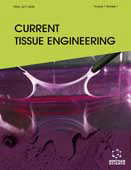Abstract
Upon injury or burn, and if no intervention takes place, skin repair is the natural tissue restoration mechanism in humans. However, massive scar tissue and consequently non-functional skin is often formed.
Although skin substitutes have the longest history of application, and the highest record of tissue engineering products in the market, major limitations including deficient vascularization, low performance of cellular components and lack of adnexal appendages are still a foremost concern. Moreover, current products proved to represent replacement strategies where the major concern is the survival of the implanted substitute and wound healing, instead of promotion skin tissue regeneration.
Current state of the art, exploring stem cells potential, as well as the healing microenvironment/matrix, is indicative of skin substitute’s defective signals to induce skin regeneration. Stem cells are expected to play an active role, either by direct or indirect signaling through paracrine interactions or transdifferentiation, privileging an integrated and orchestrated remodeling rather then replacement. Nonetheless, the extracellular matrix dynamics during wound healing is also seen as a determinant factor in the presentation of cues for tissue morphogenesis, accurately leading regeneration. Thus the complex interplay between extracellular matrix, cells and growth factors, within a particular three dimensional environment, is being taken as the basis for the design of improved and more efficient skin tissue engineering strategies.
Keywords: Extracellular matrix, skin regeneration, stem cells, tissue engineering, wound healing.
 10
10

